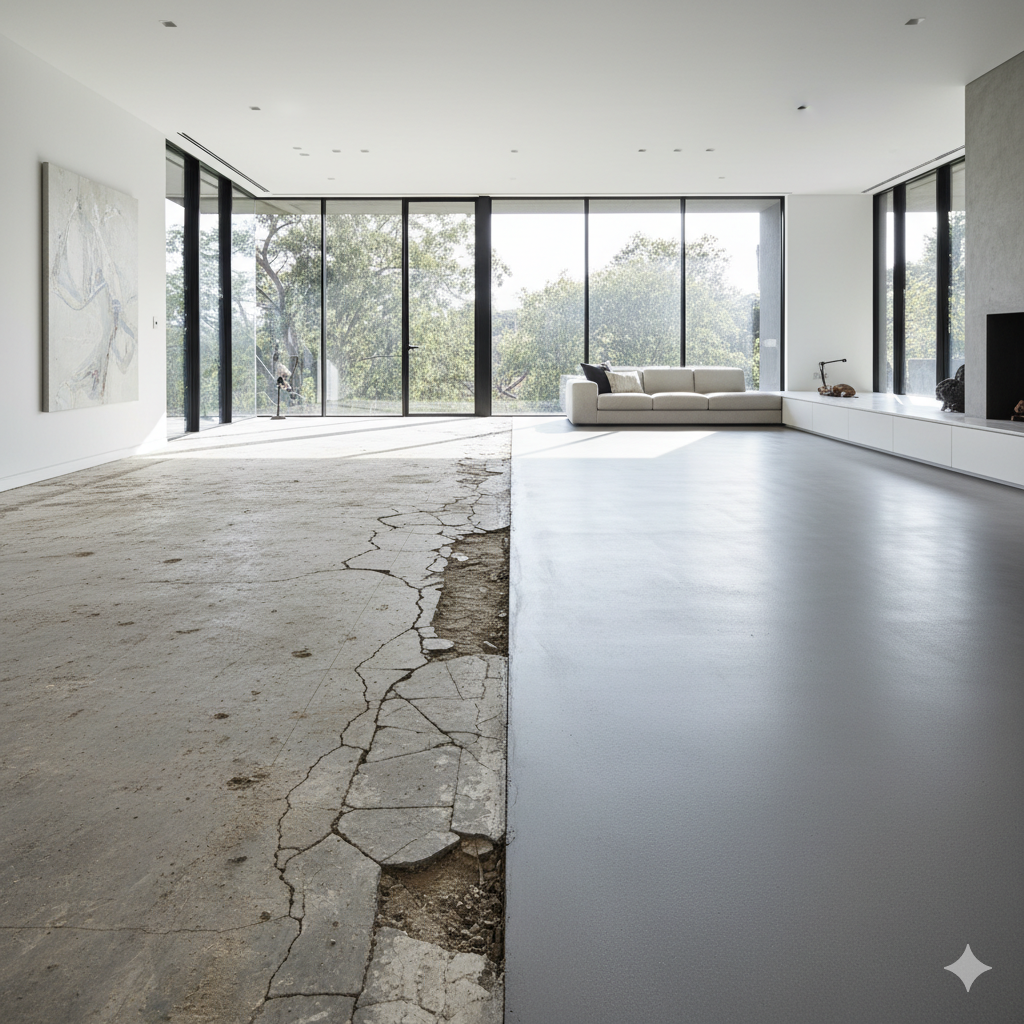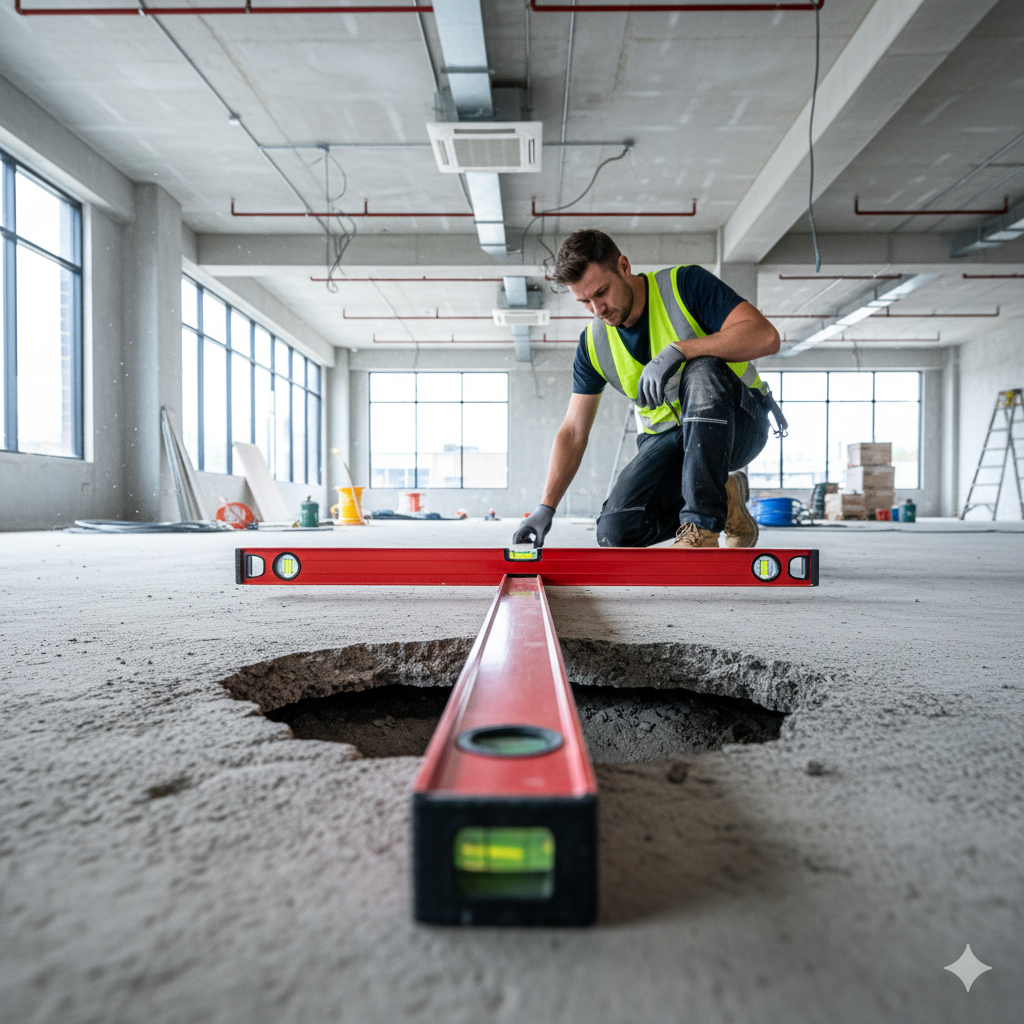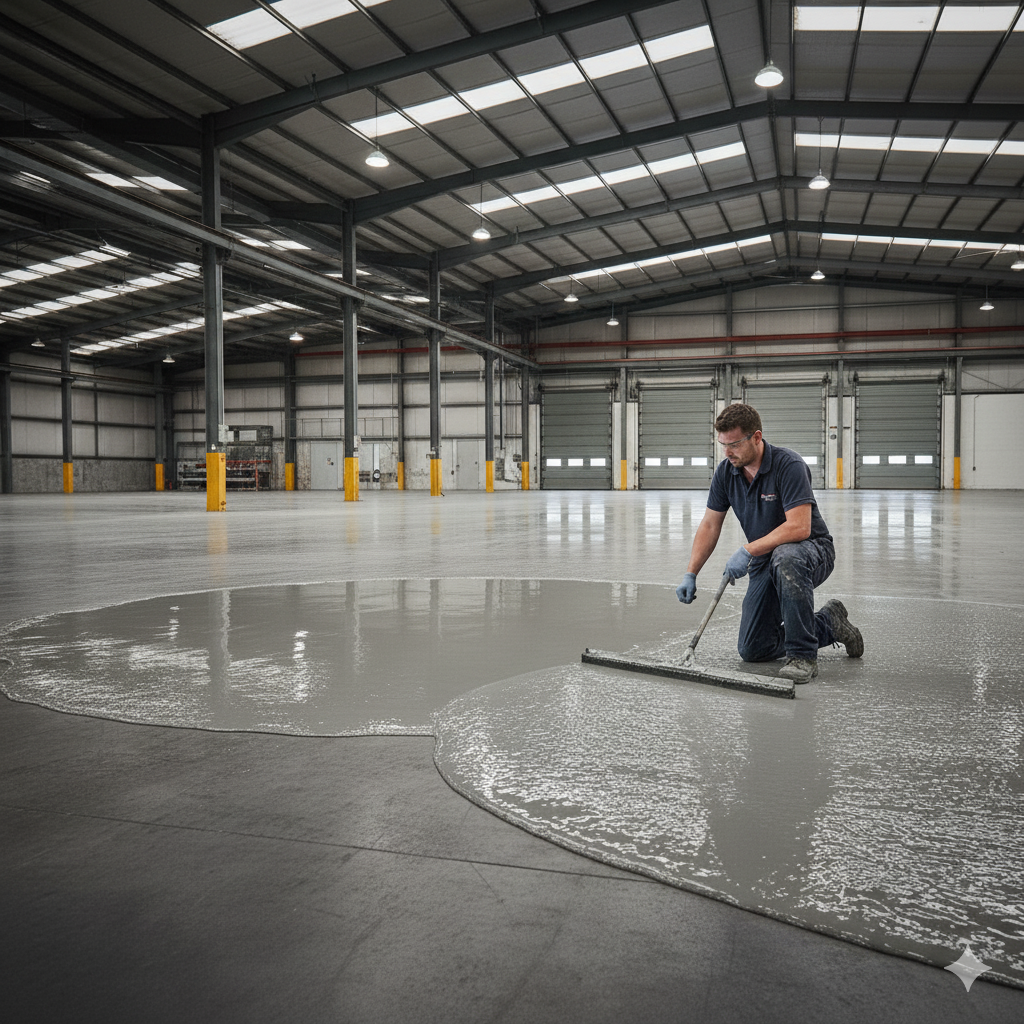Let’s be honest, mate. There’s nothing that sinks that professional pride faster than a finished job undermined by what lies beneath. You’ve laid the perfect timber, the flawless tiles, or the seamless vinyl, but the client calls back. Why? Because the subfloor was a shocker. In a competitive market like Sydney, a callback isn’t just a hassle; it’s a hit to your reputation.

A cracked, uneven, or unlevelled floor isn’t just an eyesore; it’s the root cause of flooring failures. For tradies across New South Wales, mastering the art of subfloor preparation isn’t just a skill—it’s your secret weapon. But are you using the right techniques and products for the job?
At Elyment Group, we see the results of subpar subfloors every day. This guide is for you: the professional on the tools who knows that a job is only as good as its foundation. Let’s get it right, every time.
Why a Perfect Subfloor is Non-Negotiable in NSW Construction
Think of the substrate as the canvas for your masterpiece. If the canvas is warped and torn, your art will never look right. The same goes for flooring. An uneven surface can lead to:
- Cracked tiles and grout lines
- Warped or separating floorboards
- Vinyl and laminate planks that click, shift, or peak
- Poor adhesion and premature failure of coatings
- An unhappy client and a big hit to your bottom line
In areas from the Sydney CBD to regional NSW, soil movement and varying construction standards mean you can never assume a subfloor is ready to go.
The Culprits: What’s Causing These Floor Faults?
Before you can fix it, you need to know what you’re up against. Common causes include:
- Concrete Shrinkage: Natural curing processes can cause cracks.
- Slab Settlement: Common in Sydney’s varied soil types, leading to unevenness over time.
- Previous Work: Old tile adhesives, paint, or poor patch jobs left by other trades.
- Moisture Issues: Hydrostatic pressure can cause delamination and surface damage.
Your Pro Toolkit: How to Properly Assess the Damage
Don’t just eyeball it. A professional assessment saves time and money. What should be on your checklist?
- Visual Inspection: Look for obvious cracks, spalling (flaking), and signs of moisture.
- Check for Level: Use a long straight edge or a laser level. Don’t trust a short spirit level for a large area. The Australian Standard (AS 1884-2012) for floor coverings is a good reference here.
- Test for Moisture: A concrete moisture meter is a non-negotiable tool. Skipping this step can lead to catastrophic failure of adhesives and coatings.

The Fix: Pro Solutions for Flawless Floors in Sydney
Once you’ve diagnosed the problem, it’s time for the solution. Here’s the professional approach.
Tackling Cracks: Beyond a Simple Patch Job
For structural cracks, a simple filler won’t cut it. The real solution involves structural repair. This often means using low-viscosity epoxy or polyurethane injection resins that penetrate deep into the crack, effectively “welding” the concrete back together and restoring its integrity.
Conquering Unevenness: Grinding vs. Levelling Compounds
What’s the best approach for a lumpy, bumpy floor?
- Concrete Grinding: Best for removing high spots, old adhesives, and contaminants. A machine equipped with diamond segments grinds the surface down to a smooth, flat plane. It’s the essential first step for proper surface preparation.
- Self-Levelling Compounds (Screeds): Ideal for filling in low spots and creating a perfectly flat surface across a large area. After grinding, a high-quality, cement-based self-levelling compound can be poured. It flows into depressions and creates a new, super-flat surface ready for any floor covering.
Pro Tip: In many Sydney projects, the best result comes from a combination of both: grinding the high spots and then applying a self-levelling screed for a billiard-table-flat finish.
Partnering for Perfection: When to Call in the Specialists
As a tradie, your time is money. While you can handle many jobs, large-scale floor preparation requires specialised machinery and expertise. Partnering with a specialist floor preparation company like Elyment Group ensures the job is done right, to Australian Standards, and on schedule.

Want to guarantee a flawless finish on your next project? Follow our pros on X @ElymentGroup for more tips!
Key Takeaways for NSW Tradies
- NEVER skip subfloor assessment. It’s the foundation of your reputation.
- ALWAYS use the right tool: a long straight edge or laser for levelness and a moisture meter.
- GRIND before you fill. Proper surface preparation is key to adhesion and a level finish.
- INVEST in high-quality repair materials and levelling compounds.
- PARTNER with specialists for large or complex jobs to save time and ensure a perfect result.
